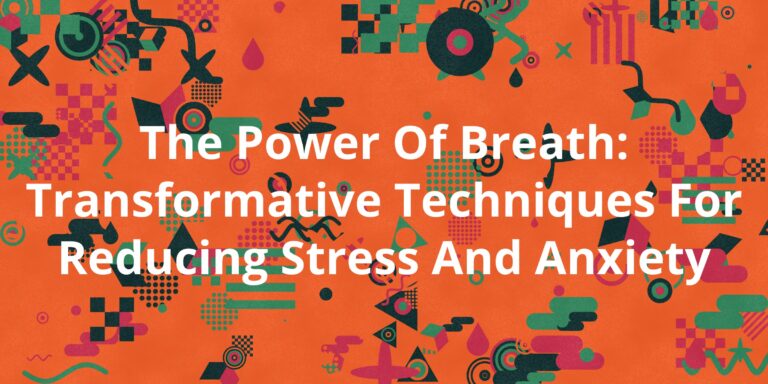Breathing is one of the most fundamental aspects of life, yet it is often overlooked. Our breath is our connection to the world around us, and it plays a crucial role in our overall health and well-being. In fact, many spiritual traditions have long emphasized the importance of mastering the art of breathing as a way to achieve inner peace, increased awareness, and greater wisdom.
In this comprehensive guide, we will explore various transformative techniques for mastering the art of breathing. We will delve into the science behind breath, the benefits of breathing exercises, and practical tips for incorporating these practices into your daily life.
The Science Behind Breath
Breath is a complex process that involves the exchange of gases between our body and the external environment. During inhalation, air enters through our nose or mouth and travels down the trachea, through the bronchi, and into the lungs. In the lungs, the air is exchanged with oxygen and carbon dioxide through tiny sacs called alveoli. During exhalation, the air leaves the body through the nostrils or mouth.
Breathing affects every aspect of our physiology, from our heart rate to our digestion. It can also have a profound impact on our mental state. Studies have shown that slow, deep breathing can reduce stress and anxiety, while rapid, shallow breathing can lead to feelings of panic and fear.
The Benefits of Breathing Exercises
Breathing exercises have been practiced for thousands of years as a way to cultivate inner peace, increase awareness, and improve overall health. Here are some of the many benefits of these practices:
1. Reduced Stress and Anxiety: Slow, deep breathing can help calm the nervous system and reduce feelings of stress and anxiety.
2. Increased Energy: Focused breathing can increase oxygen intake, which can lead to increased energy and vitality.
3. Improved Concentration and Focus: Practicing mindful breathing can help improve cognitive function and enhance concentration and focus.
4. Better Sleep: Slow, deep breathing can promote relaxation and help you fall asleep faster and stay asleep longer.
5. Greater Awareness: Breathing exercises can help increase awareness of the present moment and reduce feelings of detachment from reality.
Practical Tips for Incorporating Breathing Exercises into Your Daily Life
Here are some practical tips for incorporating breathing exercises into your daily life:
1. Start with just a few minutes each day: Begin by setting aside just a few minutes each day to practice mindful breathing. As you become more comfortable with the technique, you can gradually increase the duration of your sessions.
2. Practice in a quiet space: Find a quiet place where you won’t be disturbed by outside noise or interruptions.
3. Focus on your breath: Pay attention to the sensation of air entering and leaving your nostrils or mouth. Try to keep your mind focused solely on your breath.
4. Use different breathing techniques: There are many different breathing techniques to choose from, including diaphragmatic breathing, alternate nostril breathing, and box breathing. Experiment with different techniques to find the one that works best for you.
5. Make it a regular practice: Incorporate mindful breathing into your daily routine as a way to reduce stress, increase focus, and improve overall well-being.
Conclusion
Mastering the art of breathing is an essential skill for anyone looking to lead a more fulfilling and balanced life. By incorporating breathing exercises into your daily routine, you can cultivate inner peace, increase awareness, and improve overall health and well-being. Whether you are new to mindful breathing or have been practicing for years, there is always something new to discover about this powerful tool for personal transformation.



